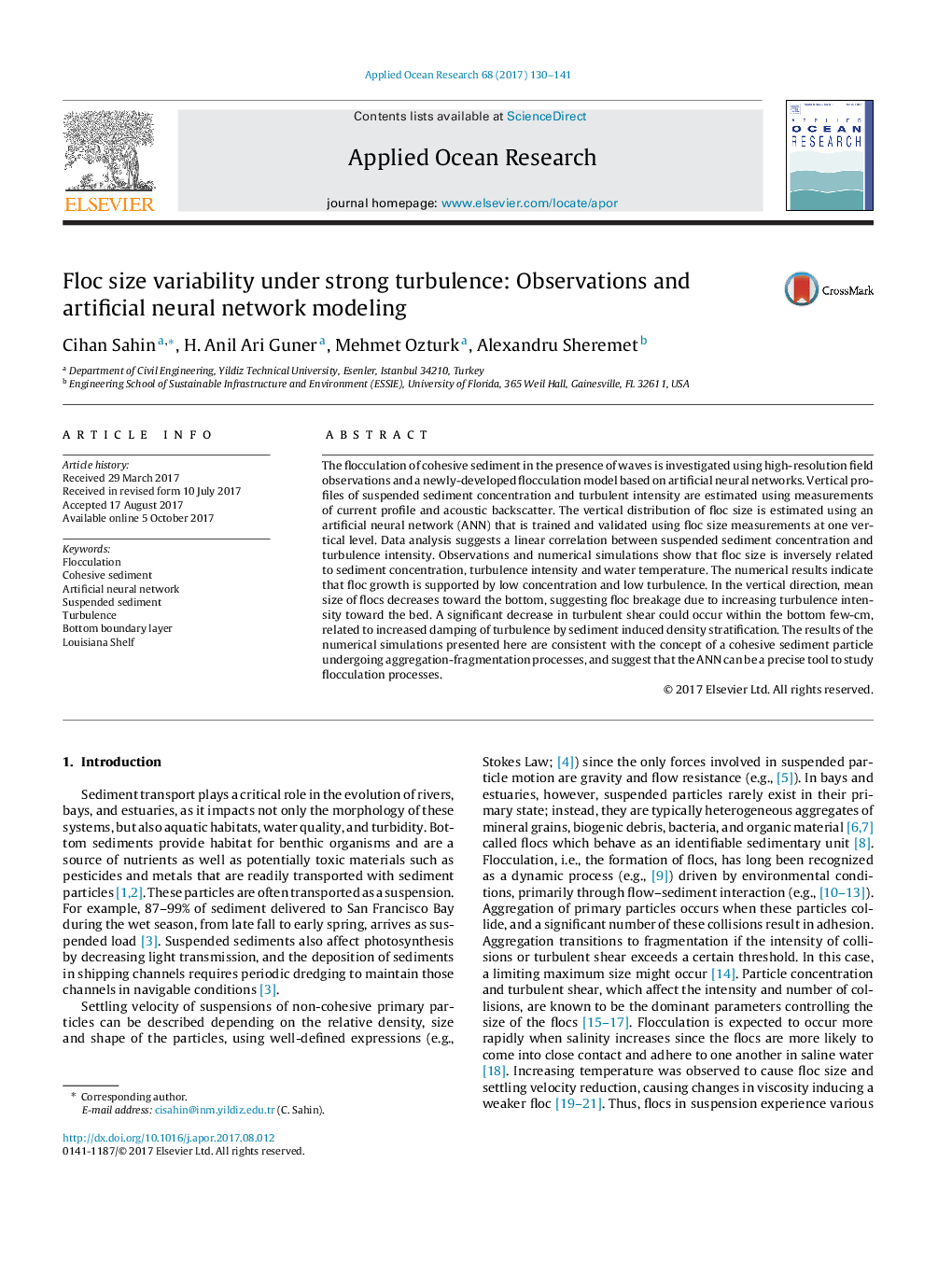| Article ID | Journal | Published Year | Pages | File Type |
|---|---|---|---|---|
| 5473159 | Applied Ocean Research | 2017 | 12 Pages |
Abstract
The flocculation of cohesive sediment in the presence of waves is investigated using high-resolution field observations and a newly-developed flocculation model based on artificial neural networks. Vertical profiles of suspended sediment concentration and turbulent intensity are estimated using measurements of current profile and acoustic backscatter. The vertical distribution of floc size is estimated using an artificial neural network (ANN) that is trained and validated using floc size measurements at one vertical level. Data analysis suggests a linear correlation between suspended sediment concentration and turbulence intensity. Observations and numerical simulations show that floc size is inversely related to sediment concentration, turbulence intensity and water temperature. The numerical results indicate that floc growth is supported by low concentration and low turbulence. In the vertical direction, mean size of flocs decreases toward the bottom, suggesting floc breakage due to increasing turbulence intensity toward the bed. A significant decrease in turbulent shear could occur within the bottom few-cm, related to increased damping of turbulence by sediment induced density stratification. The results of the numerical simulations presented here are consistent with the concept of a cohesive sediment particle undergoing aggregation-fragmentation processes, and suggest that the ANN can be a precise tool to study flocculation processes.
Keywords
Related Topics
Physical Sciences and Engineering
Engineering
Ocean Engineering
Authors
Cihan Sahin, H. Anil Ari Guner, Mehmet Ozturk, Alexandru Sheremet,
